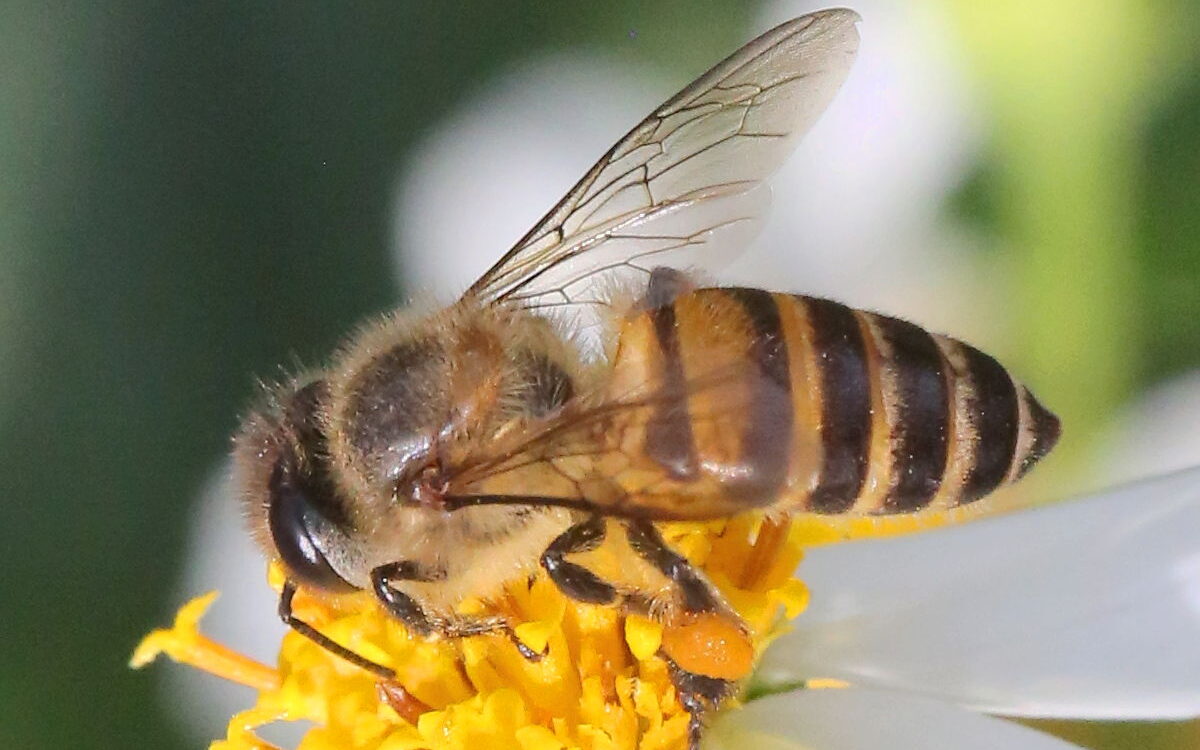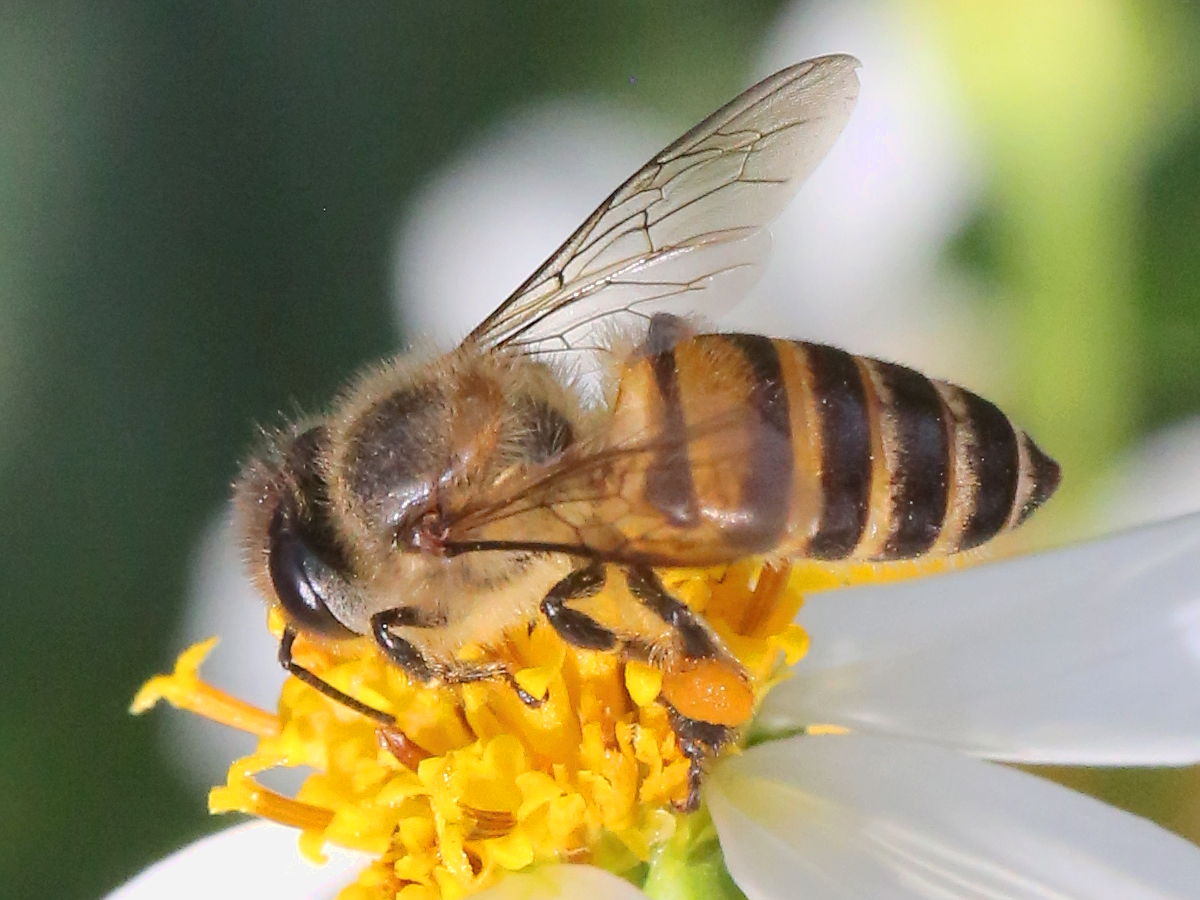This web page was produced as an assignment for an undergraduate course at Davidson College.
Historical gene reuse on the Leucokinin receptor gene (Lkr) in A. cerana influences the species’ adaptation to diverse habitats by varying sucrose sensitivity, influencing the division of foraging labor.

Bee populations continue to decline due to Colony Collapse Disorder and climate change (Li et al. 2012). In response, scientists have turned their interests to not what honeybees do, but how they do it. As eusocial insects, bees have opted for cooperation instead of conflict by dividing labor to take care of the hive rather than prioritizing personal survivability and reproduction (Woodard et al. 2011). The species A. cerana, the Asian honeybee, has increased the impressiveness of this trait by successfully adapting to the largest native range among Asiatic Apis species.
This study seeks to understand how A. cerana with so much genetic variation succeeded in adapting to their environments. In order to understand the full picture, Ji et al. aimed to accomplish three goals in this study. The first was to obtain the population structure and evolutionary history of the mainland Asian honey bee through whole genome sequencing and geometric morphometric evaluation. Geometric morphometric evaluation consists of examining the phenotype of A. cerana in correspondence to genomic information. The second was to use the information from whole genome resequencing and geometric morphometric evaluation to identify gene reuse among subspecies of A. cerana in diverse local habitats. Gene reuse is based on the phenomenon that natural selection prefers to occur on a few genes rather than constantly selecting for the whole genome. Therefore, Ji et al. looked for genes that persisted throughout the bees’ evolutionary history despite mutations and variance. Thirdly, Ji et al. aimed to explore the key functions of the gene under reuse and confirm its role in the division of labor. They hypothesized based on their observations that the division in labor and its efficiency (i.e., amount of pollen or nectar collected) was key in how each subspecies adapted to their habitats.
Ji et al. sequenced 343 A. cerana worker bees across its full distribution range in China, adjacent areas, and public information. 343 colonies were represented in the study with one worker bee per colony sequenced. The coverage of the genome, the number of times the DNA sequence is read, was ~15x. They pulled ~4.5 million single nucleotide polymorphisms (SNPs). SNPs are individual nucleotides in DNA that mutate to another nucleotide. Using SNPs, they concluded that multiple peripheral groups stemmed from one central group in the bees’ evolutionary history. Then, they followed linkage disequilibrium (LD), the non-random association of multiple alleles across loci in a population, and used ~1.8 million SNPs to infer population structure. They concluded eight genetically distinct groups were represented. However, this is not to be confused with the six peripheral groups where they focused on genetic diversity and independent adaptation: Hainan Island, Aba, Taiwan, Qinghai, Bomi, and Northeast Asia (China, North and South Korea, and Japan). The data indicate that peripheral groups independently derived from one central group through migration.
Ji et al. inferred that the alterations in environmental conditions would have forced strong selection pressure on new founding populations and posed selective pressure on pollen and nectar collection based on the length of flowering seasons. Due to strong selection, gene reuse became prevalent during independent habitat adaptation. The study considered 176 genes for selective sweeps. Selective sweeps are new advantageous mutations that decrease genetic variation as it increases in allele frequency within the population. The frequency distribution of the genes was strongly skewed toward peripheral group lineages as 26 genes were under selection in at least two of the peripheral groups even as they migrated farther from one another. One consistently reused gene was the Leucokinin receptor gene (Lkr) which was detected in all six peripheral groups. It was also significantly expressed in the antennae and brain as opposed to the thorax or gut of the bee, indicating it is used for some communicative purpose. Lkr was also expressed more in foragers than nurse bees, indicating foraging importance.
Ji et al. recognized a genetic component to worker bee labor division as nectar collectors had a high sucrose threshold and pollen collectors and nurse bees did not. They tested their theory on how Lkr expression affected sucrose sensitivity. Using RNA interference, they suppressed the expression of the Lkr gene through transcription and found that a reduction of Lkr expression in the brain significantly increased the sucrose response threshold. This provided evidence that Lkr expression in the brain regulates the sucrose response threshold which influences division of labor. They then observed that nectar collectors did in fact have a lower expression of Lkr in the brain compared to other worker bees.
The more individuals with low Lkr expression that can collect pollen and nectar, the main sources of protein and lipids for bees, allows for continued success as a hive. While A. cerana is successful in its locally derived habitat, when placed into a different habitat (i.e., tropical to harsh winter) the bees fail to adapt to the requirements of that environment as quickly as necessary (Ji et al.). While impressive, A. cerana is not invincible to the effects of climate change. However, the findings in this study have opened the possibilities to understand how genetically we may be able to aid in the Asian honeybees conservation efforts. As hives continue to collapse around the world, supporting their survival environmentally and potentially genetically will make all the difference for agriculture.
Kamryn Graham is a sophomore biology major at Davidson College. Contact her at kagraham@davidson.edu.
References
Ji, Y. et al. Gene reuse facilitates rapid radiation and independent adaptation to diverse habitats in the Asian honeybee. Sci. Adv. 6, eabd3590 (2020).
Li, J. et al. The Prevalence of Parasites and Pathogens in Asian Honeybees Apis cerana in China. PLoS ONE 7, (2012).
Woodard, S. H. et al. Genes involved in convergent evolution of eusociality in bees. Proceedings of the National Academy of Sciences 108, 7472–7477 (2011).
© Copyright 2020 Department of Biology, Davidson College, Davidson, NC 28036.
